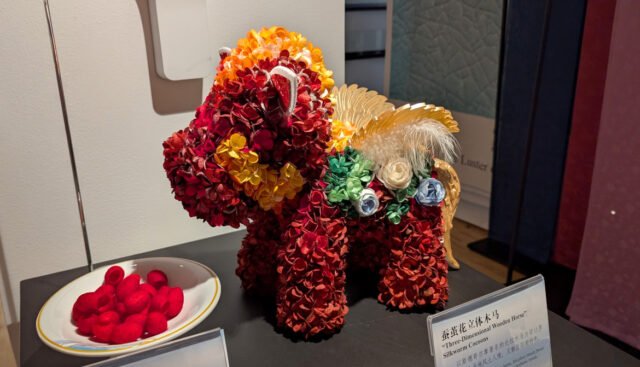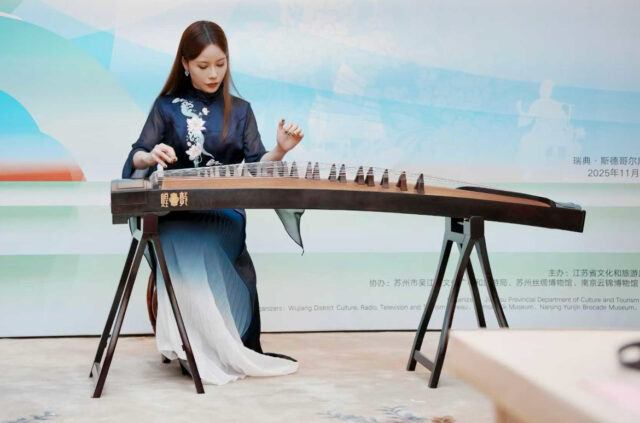A colorful cultural and tourism event showcasing the unique traditions, crafts, and modern charm of Jiangsu Province took place in Stockholm on November 7.
The Jiangsu Provincial Department of Culture and Tourism and the Chinese Cultural Center in Stockholm hosted an inspiring event where visitors experienced China's cultural heritage through music, tea, crafts, and interactive activities reflecting both history and the present day.
The highlight was a concert where Chinese and Swedish artists united East and West in a poetic musical dialogue between nyckelharpa (a traditional Swedish keyed fiddle), guzheng (Chinese zither), and bamboo flute, an interpretation of the spirit of "water," the symbol of Jiangsu's elegance and cultural depth.
The Cultural Center was filled with visitors who sampled tea, enjoyed exhibitions, and explored opportunities for future collaborations. Many were fascinated by Jiangsu's combination of tradition, innovation, and artistic finesse.
At the same time, the exhibition Canal Reflections & Craft Revival was displayed with three thematic rooms: The Taste of Tea, The Rhythm of Silk, and The Color of Porcelain. In the tea room, classical paintings such as Huishan Gathering created a poetic atmosphere, where the renowned green tea Biluochun and Yixing clay vessels offered a taste of Jiangnan's refined culture. Jiangsu Phoenix Publishing Group also presented the English edition of The Taste of Chinese Plants, which was shown to an international audience for the first time.

Suzhou Silk Museum and the brand Taihu Snow displayed joint creations where historical patterns met modern design. Additionally, Suzhou University's digital laboratory for traditional crafts demonstrated its new color digitalization system for the kesi embroidery technique, alongside a demonstration by young Suzhou embroidery artists.

In the porcelain section, elegant Yixing celadon and ceramic art from Gaochun were displayed, a modern interpretation of the spirituality of water and the symbolism of color in Chinese aesthetics.

Jiangsu is a province that unites tradition, innovation, and sustainable tourism, something that more and more Swedish travelers are discovering. The event is part of Jiangsu's international program for cultural and tourism promotion, with the goal of creating new bridges in tourism, education, and cultural exchange.
— We want to invite our Swedish friends to discover Jiangsu's beauty, not just as a destination, but as a cultural experience that touches all the senses, says Qian Ning from the Jiangsu Provincial Department of Culture and Tourism.
From November 10, 2025, a visa-free arrangement applies for Swedish citizens traveling to China for stays of up to 30 days, a new opportunity to experience Jiangsu's charm up close.
Guzheng – the ancient unique stringed instrument
The guzheng is a Chinese stringed instrument with a history spanning over 2,500 years. The earliest variants emerged during the Warring States period and evolved to become a popular instrument at courts, ceremonies and banquets during the Qin and Han dynasties. The instrument's design changed gradually; it gained more strings and improved resonance, which enabled greater expressiveness and musical variation.
Particularly during the Tang dynasty, the guzheng's role flourished within both classical and folk music, and several technical innovations made the instrument even more versatile. During the 20th century, new materials were introduced in the strings, and standardized forms were developed to meet the demands of modern music. Today, the guzheng is one of China's most beloved and widely used traditional instruments.







